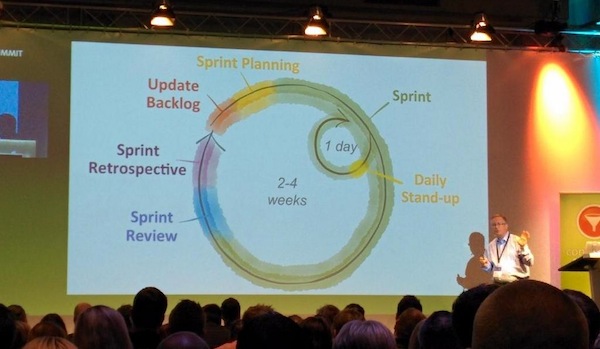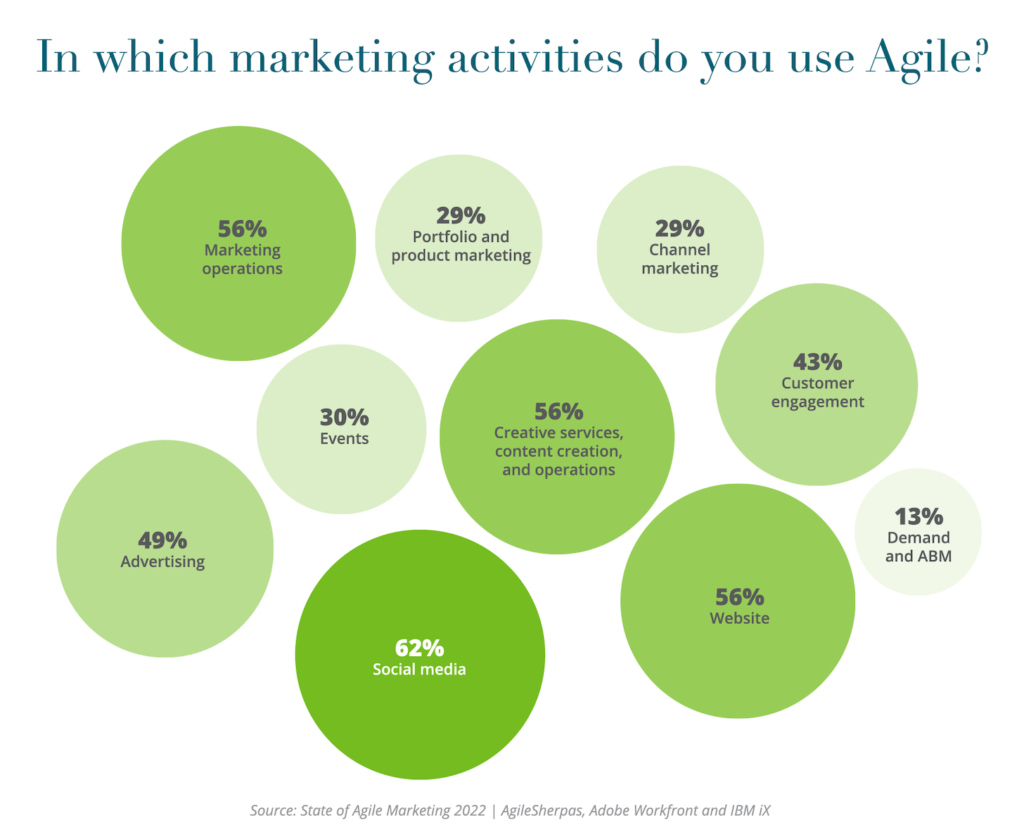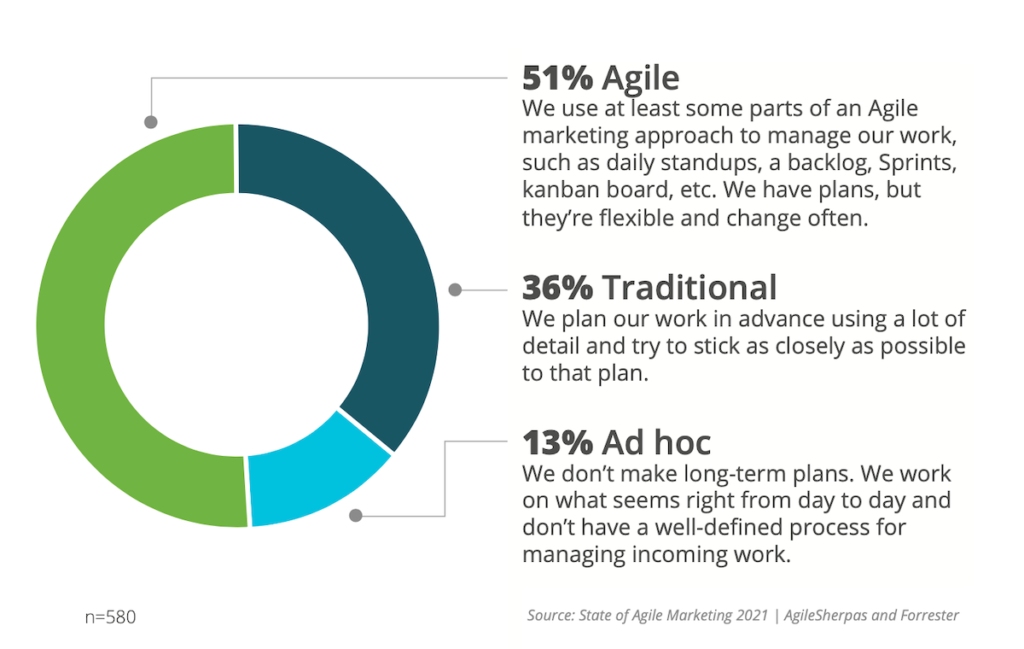
I’m writing this in Frankfurt, where I was honored to be one of the keynote speakers at André Morys’ Conversion Summit, a yearly gathering of several hundred conversion optimization professionals in Germany.
My topic was agile marketing, one of my favorite. After 7 years of working in the conversion optimization space, I’m convinced that adopting agile is the single best thing a company can do to improve its results in conversion optimization.
Usually when I present on agile marketing, the audience splits between those who are intrigued by the concept and those who dismiss it out of hand. (“Clearly, this guy is a software developer, because he just doesn’t get how marketing works.”)
This time, however, a significant portion of the audience fell into a third group: those who were already practicing agile marketing and were enthusiastic champions of it. There’s nothing better than finishing a presentation like this and having someone jump up from their seat, “We’re doing this in our company, and it’s been fantastic!” (I swear I didn’t pay that guy to do that.)
It’s great to see real adoption of agile marketing start to take off. But at the same time, it provides a sharper contrast with those who continue to dismiss it. “Oh, that would never work at my company.”
There are two ironies here.
The first is that the companies who have successfully adopted agile marketing and those who refuse to consider it are now sometimes in the same industry, competing for the same kinds of customers, executing very similar work. The ones who dismiss it often use the excuse, “It’s not a good match with the kind of work we do.” Yet those succeeding with it, just two rows back from them, are direct counterexamples.
It’s not about the kind of work. It’s about culture, management, and — perhaps more than anything — a willingness to change.
I had one head of marketing come up to me after my talk and say, “I liked your presentation, but it would never work with my group because the creative team would hate working in that structure.” I tried to suggest that they might actually find it helpful, as a way to better regulate the flood of requests they were constantly hit with and to carve out more time to focus on the joy of creation. She just smiled politely in a way that communicated that she didn’t believe that for a minute.
Yet as we parted ways, someone else grabbed me by the shoulder and said, “I just want you to know that we’re using agile in our marketing department, and we love it. I’m the head of creative at my company…”
If only I could have gotten the two of them to meet.
Yet even that may not have bridged the gap. Because the second irony is that I increasingly hear people who believe they can be agile — without actually having to adopt any kind of agile methodology.
My question back to them is, “Okay, how? What will you do differently now?”
Don’t get me wrong. I’m not an agile fundamentalist. I don’t care if you rigidly follow Scrum or any other formal agile methodology. Make up your own! But agile is not merely a state of mind. No motivational speaker will make your organization agile. You need real, explicit organizational processes and management approaches to enable agile behavior. This often requires replacing rigid, top-down, hierarchal structures with more flexible, bottom-up, distributed leadership.
That is a very different kind of operational gestalt than most companies have built themselves around. Changing that is hard. And “greenwashing” your old processes with agile labels doesn’t cut it.
Adopting an agile methodology — frankly, any agile methodology — forces you to break old patterns and consciously rethink how you’re doing things, not just what you’re doing. A good agile methodology forces you to act differently, as a catalyst for learning to think differently. Only once you’ve broken the stranglehold of existing habits are you free to start inventing new ones.
But, hey, you don’t have to do that.
As W. Edwards Deming noted, “It is not necessary to change. Survival is not mandatory.”
Photo credit: Alexander Gut at DAIR Media.



One of the key elements of any “agile” process is being able to get everyone in the same room. I know with modern technology we have Skype/Webex and the rest, but when I had my software company and we moved to the agile development process, I learnt one thing quite quickly, was that the “agile process” is only really effective if everyone is present. So marketing being marketing, strategy through to execution is very dependent on the “human supply chain”, thus to include your key agency and media personnel are key as they hold many of the actions to enable a brand to optimize an “agile marketing process.” So my suggestion is to “think about the supply-chain and who are the key dependents” at each stage of your agile process and insure that you have their attendance during your agile sessions. It will help!
Great advice, David. Love the “human supply chain” metaphor.
We’ve made agile work in situations where some people simply had to be videoconferenced in via GoToMeeting or Google Hangouts — video is much better than just an audio conference call! — but I fully agree: in-person agile is best, especially when you’re getting started.
Scott, Since Toyota started sharing their system, evolving into the “lean Manufacturing” movement, and delivering huge productivity improvements 30 years ago, it has been clear that there were concepts and disciplines applicable to less quantitatively explicit functions. Office processes, sales, and very recently marketing have been the beneficiaries but in marketing, it has been hard yards, the skeptics have largely ruled the roost.
My view is that it was just self interest at work, why accept a set of measures that increase the level of marketing accountability when you can avoid them, and stay at lunch.
Software developers adapted the TPS to their discipline, just as every function has to adjust, but the base principals set out by Taiichi Ohno in the sixties hold true pretty much across the board.
Well done shining more light into the corners, and sending the mice scurrying.
Allen Roberts
It was a great Presentation @ comversionsummit!
By the way, is that my photo here in blog?
https://twitter.com/dair_media/status/507473539017211904
I’m highly honoured!
Thanks, Alex — photo credit added! 🙂
The uneasy alliance between marketing and technology reminds me of a great but little known book titled ‘the two cultures’ by C.P. Snow. The subject involves much more than simply two different business related disciplines; it is a more philosophical distinction involving two different mentalities. C.P. Snow often used a comparison drawn from academia; stating a dichotomy between the ‘humanities’ and the ‘sciences’ – or literary minds vs scientific minds. Yes, this is a “two cultures” issue for sure: fascinating. BTW – Just ‘met’ Eric Long on Twitter – terrific guy..
+1 for C.P. Snow reference.
Agile : Process :: Inbound Marketing : Sales
Communication = Information – noise – redundancy. Thank you Claude Shannon for your “mathematic theory of communication”.
I’m prepping for a presentation about Agile Marketing and you took the words out of my mouth!! Very motivational and inspiring post!
Thanks — good luck with your presentation!